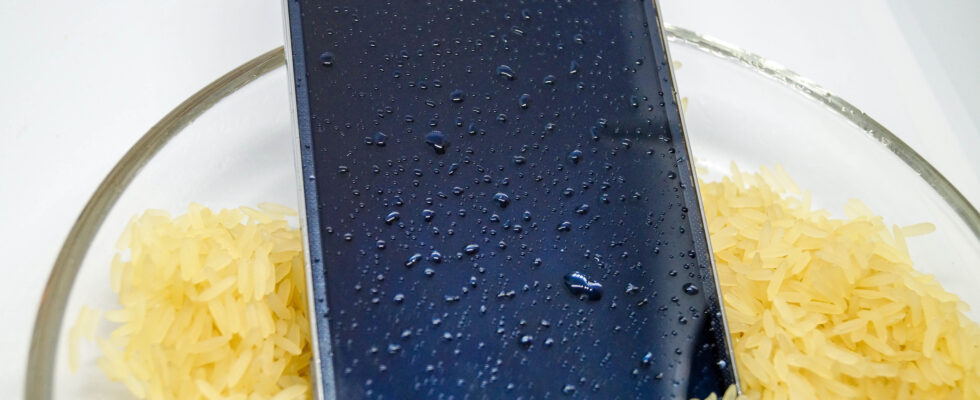Image: Andreas Steidlinger/Getty Images.
You’ve probably already heard it if you’ve seen “liquid damage” on a smartphone: soaking it in a bag of rice would dry it out and make it functional again in a few hours.
However, this method does not work. If you don’t believe us or the many people who have tested it, Apple might be able to convince you.
Why not use rice on a wet iPhone?
Earlier this year, Apple updated its iPhone liquid damage support page, adding this warning: “Do not put your iPhone in a bag of rice, as small particles of this liquid damage grass could damage your device. » An addition spotted and reported by our colleagues at MacWorld a few days ago.
Since iPhone 12, all iPhones have been IP68 rated, meaning they are waterproof up to six meters deep for 30 minutes and dust resistant. So, in reality, the problem is not that rice might get into the iPhone, but rather that grains might get stuck in the ports and speakers. Places from which it would be difficult – if not impossible – to dislodge them.
To put it simply, if your iPhone falls into water, don’t use rice! It could do more harm than good.
Apple’s advice
On its support page, Apple issues other warnings:
- Do not insert foreign objects, such as a cotton swab or paper towel, into the connector.
- Do not dry your iPhone using an external heat source or compressed air can.
In the event of liquid damage to your iPhone, Apple recommends following the following procedure:
- Tap it with the connector facing down to remove excess liquid.
- Leave your iPhone in a dry, well-ventilated place.
- Wait at least 30 minutes, then try charging your device using your charging cable or connecting an accessory.
- If the alert appears again, liquid is still present in the connector or under the cable pins. Leave your iPhone in a dry, well-ventilated place for up to a day. You can try charging it again or connecting an accessory during this time. It may take up to 24 hours for the moisture to disappear.
- If your phone doesn’t charge while it’s dry, unplug the adapter cable and unplug the adapter from the wall outlet (if possible), then plug them back in.
What about non-waterproof electronic devices?
While iPhones have been waterproof for several years, this is not the case for most electronic devices. If one gets wet, the only way to save it is to quickly disassemble it and clean it with distilled water or suitable solvents (e.g. isopropyl alcohol). If you fail to disassemble and clean it properly, your device may not work again – or at least its lifespan will be significantly reduced. This is regardless of what other measures you might take.
Sometimes electronic devices that have been wet and then dried will function properly again, at least for a while, as if they had not been affected. However, liquid damage spreads insidiously and corrosion sets in quickly, usually leading to an early death of the device in question due to internal damage.
While some services claim to be able to dry your wet devices, the results are very often mixed. The consequences on the device also generally depend on the liquid in question: they will not be the same if the device has been exposed to clean water or soda.
When it comes to liquid damage, as in many other areas, prevention is better than cure!
Source: ZDNet.com
